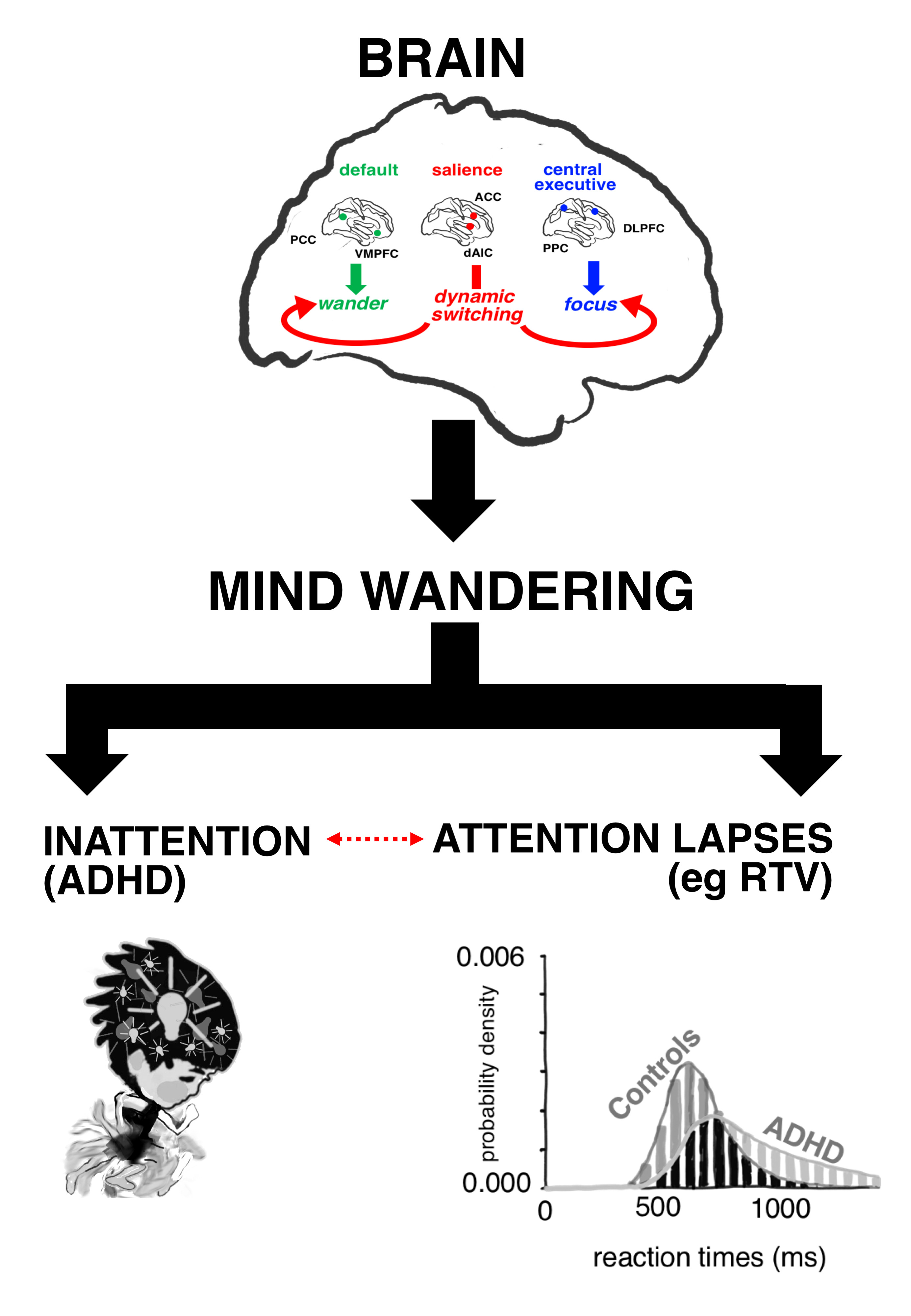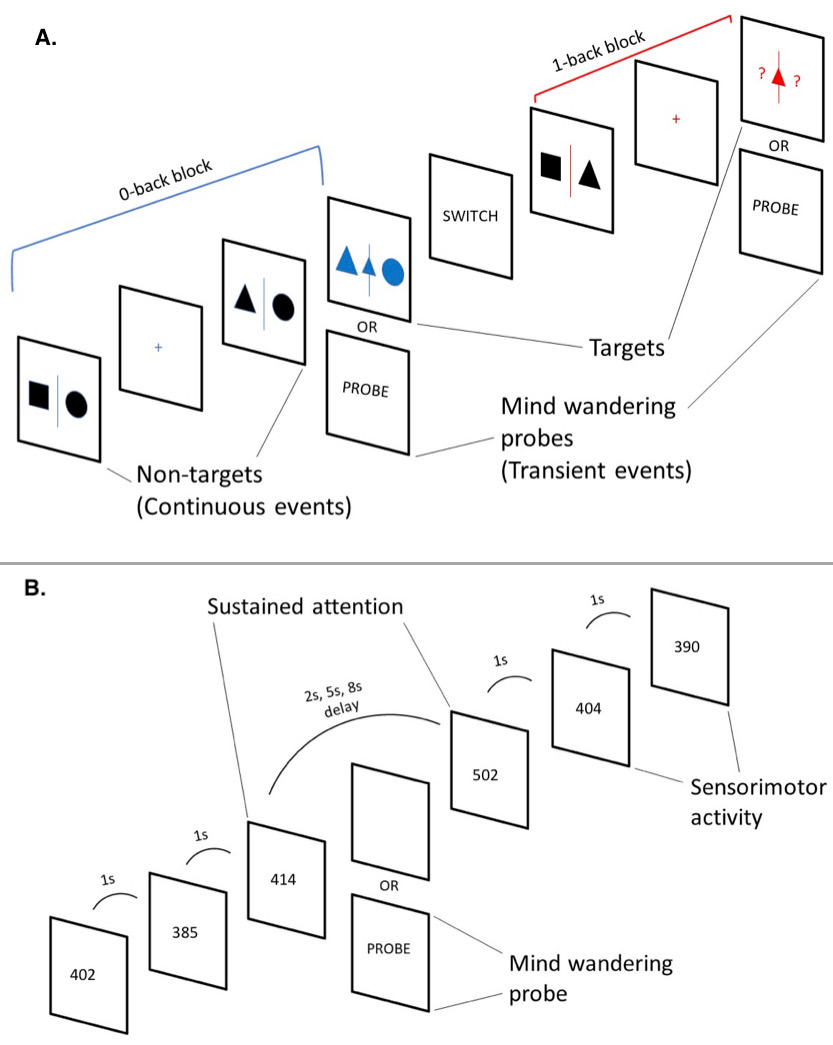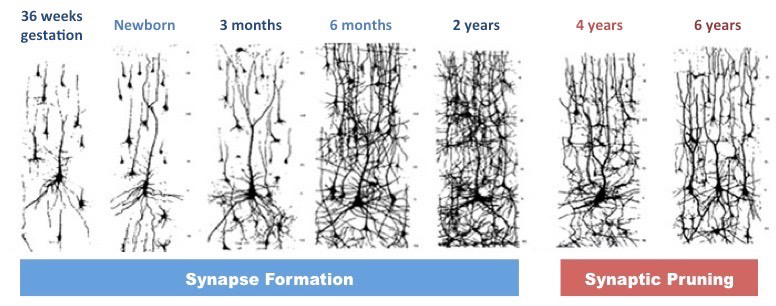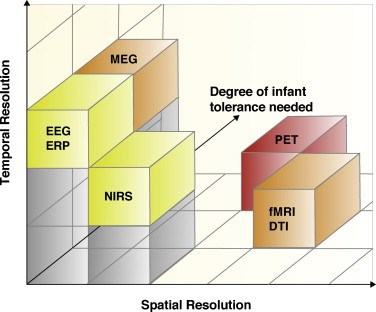Mind wandering in ADHD
Objectives
- To understand the mind wandering (MW) hypothesis of attention deficit/hyperactivity disorder(ADHD), (theoretical implications).
- To understand the neural basis of mind wandering in ADHD.
- To understand the clinical implication(s) of mind wandering in ADHD.
ADHD
ADHD: a common neurodevelopmental disorder, characterised by inattentive and hyperactive/impulsive behaviours which interfere with everyday functioning (Fayyad et al., 2007; Polanczyk et al., 2007).
ADHD diagnosis: DIVA Inattention, DIVA Hyperactivity
Mind wandering hypothesis of ADHD:
A dysfunctional and later absent interaction between the four major networks (default mode, executive control network and salience network) is proposed to underlie different aspects of cognitive and behavioural impairment associated with MW in ADHD.

Context regulation hypothesis:
An ability to reduce frequency of MW under high demand compared low demand conditions in order to allow an adequate performance of the primary task.
MW frequency and context regulation of MW in ADHD
Model

Procedure
- Aims
- Sample
- Validity Results
- results
- Mind Wandering Frequency results: 1-back/WM and 0-back/CRT
- Cognitive performance Mind wandering task: Mean reaction time, Reaction time variability, Accuracy (Error rate),
- Cognitive performance Sustained attention task: Mean reaction time, Reaction time variability, Error rate
- Conclusion
- Future research
The slides are good protocol for investigating a novel field.
Neurocognitive development in early childhood
Learning outcomes:
- Describe typical and atypical infant neurocognitive development
- Select appropriate neurocognitive methods for assessing infant development
- Understand the dynamic interaction between genes and environment in early brain development.
- Critically evaluate research on early neurocognitive development and interpret it within theoretical frameworks
Neurocognitive development
There are two stages during wiring the brain: Synapse formation and synaptic pruning

Frameworks for understanding human functional brain development
| Maturational: domain specificity (intrinsic) | Skill learning: expertise (extrinsic) | Interactive specialisation |
|---|---|---|
| Maturation of brain regions; mature = adult level of functioning (one-off event) | Brain regions active in infants during onset of new skills are similar to those involved in complex skill acquisition in adults | Changes in specialisation of brain regions occur as they interact with each other |
| Regions ‘added in’ during development | e.g. PFC engaged in simple tasks early in development | Brain development involves a process of organising interactions between brain regions |
| Contrast with neuroanatomical development? | New behaviour/skills associated with network changes |
Methods for early neurodevelopment:
- Behavioural and cognitive tasks
- Eye-tracking
- EEG (ERPs and frequency measures)
- fMRI
- fNIRS
Comparison of brain imaging techniques

Case study: face processing
Studies demonstrate exceptionally early sensitivity to social stimuli informing cognitive neuroscience
Atypical processing of faces and gaze in autistic individuals, which is:
Shown in infants who have a higher likelihood of being diagnosed with autism
Early marker of likelihood for a later diagnosis and symptoms of autism
Atypical patterns of specialisation
Development of the cerebral cortex involves both predetermined genetic influences and activity-dependent processes
If certain synaptic connections are not laid down early in life, they are less likely to become established later in life. Once pruning has occurred and number of neurons stabilizes, the function might also “freeze” at a particular level.
Vocabulary
CRT: context regulation
ERPs: Event-related potentials


